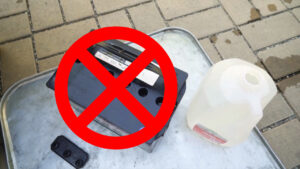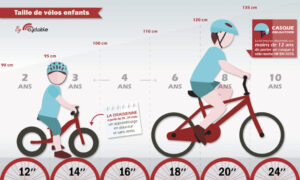Advantages and disadvantages of induction and glass-ceramic hobsIn this article, we'll review the differences between induction and glass-ceramic hobs. Induction hobs cook quickly and precisely, but require special utensils. Ceramic hobs are more affordable, but heat up slowly. Find out which are the best options for your kitchen!
Does food stick to stainless steel pans? 4 common mistakes to avoid
[arve url="https://www.youtube.com/embed/p5XcN3AyITY "/]
What's better between glass-ceramic and induction?
The question of which is better between glass-ceramic and induction is a debate that divides consumers. Ceramic glass has long been the norm in the kitchen. induction has been gaining in popularity in recent years.
Ceramic glass works by heating an electric resistance placed under a glass surface. It provides a relatively even heat distribution and enables precise cooking. However, it takes longer to heat up and cool down than induction.
Inductionuses a magnetic field to heat the pan directly. This means that only the pan heats up, not the cooking surface itself. Induction heats up and cools down extremely quickly, offering precise temperature control.
Compared to glass-ceramic, induction has several advantages. It's more energy-efficient, because it heats only the pan, not the surrounding air. It's also safer, as the cooking surface remains warm to the touch and cools quickly after use.
However, it should be noted that induction requires specific kitchen utensils with magnetic bottoms, which can be a disadvantage if you already have a collection of utensils that are not suitable for this technology.
Ultimately, the choice between glass-ceramic and induction will depend on your personal preferences and cooking needs. Glass-ceramic is a solid, reliable option, while induction offers advantages in terms of energy efficiency and safety.
What are the disadvantages of an induction hob?
The disadvantages of an induction hob are as follows:
1. Higher costs : Induction hobs are generally more expensive than traditional cooktops, which can be a disadvantage for consumers on a budget.
2. Utensil compatibility : Induction hobs require the use of specific stainless steel or cast-iron cookware to work properly. Copper, aluminum or glass cookware will not work on an induction hob, which may require the purchase of new cookware for some users.
3. Risk of scratches : Induction hobs can be more sensitive to scratches than traditional cooktops. It's important to use appropriate utensils and avoid dragging or sliding hard objects across the hob surface to prevent scratching.
4. Slow warming : Although induction hobs can heat up very quickly, they can take longer to cool down once switched off. This can extend the time needed to prepare several dishes simultaneously, which can be a drawback for some users.
5. Noise : Induction hobs can make noise during operation, particularly when used at high power. This can be disturbing for people sensitive to noise, or for those who prefer to cook in silence.
6. Electrical safety problems : Although induction hobs are generally considered safe, they require proper electrical installation to operate correctly. Problems with power surges or poor electrical connections can lead to operational or safety problems.
It's important to consider these drawbacks before choosing an induction hob for your kitchen.
What are the advantages of a ceramic hob?
A ceramic hob has many advantages over other types of hob. Here are some of the main advantages:
1. Easy maintenance : Ceramic hobs are very easy to clean, thanks to their smooth, flat surface. A simple wipe down with a sponge is usually all that's needed to remove food spills and stains.
2. Fast heating : Ceramic hobs heat up quickly, which saves time when preparing meals. What's more, they retain heat longer, which is ideal for keeping food warm after cooking.
3. Cooking precision : Glass-ceramic hobs offer excellent heat distribution, so food is cooked evenly. What's more, they're equipped with precise controls that allow you to set the desired cooking temperature precisely.
4. Safety : Ceramic hobs are equipped with safety features such as indicator lights to show whether the hob is still hot, and locking devices to prevent accidental ignition.
5. Aesthetics : Glass-ceramic hobs are elegant and modern, making them easy to integrate into any kitchen. They bring a touch of refinement to the cooking space.
It's important to note that glass-ceramic hobs require a certain amount of care when using them, as their surface can remain hot even after they've been switched off. We therefore recommend that you allow them to cool completely before cleaning or touching them.
Do all pans fit on ceramic glass?
No, not all saucepans fit on a glass-ceramic hob. Pans must be compatible with the cooking surface to avoid damaging the hob and ensure efficient cooking. Stainless steel, cast-iron, copper or aluminum pans are generally suitable for ceramic hobs. It's important to check that the bottom of the pan is flat and smooth for better heat distribution. It's best to avoid pans with rough bottoms, irregular edges or materials that could scratch the glass-ceramic hob surface.
In conclusion, induction hobs and ceramic hobs both have their advantages and disadvantages.
Induction hobs offer fast, precise cooking thanks to electromagnetic heating technology. They are also energy-efficient, heating only the surface of the pot or pan. What's more, they cool quickly, reducing the risk of burns. However, they do require the use of specific magnetic iron pots and pans, and can be more expensive to purchase.
On the other hand, ceramic hobs are less expensive than induction hobs and can be used with all types of pots and pans. They are also easy to clean, thanks to their smooth surface. However, they heat more slowly and are less precise than induction hobs. What's more, they retain heat for some time after being switched off, which can lead to burns.
So it's important to consider your personal needs and preferences when choosing between induction and glass-ceramic hobs. If you're looking for fast, precise and energy-efficient cooking, induction hobs are a good choice. However, if you're on a budget and prefer versatile cooking, ceramic hobs may be a more appropriate choice.








